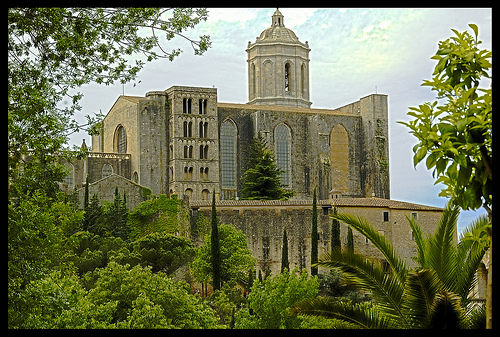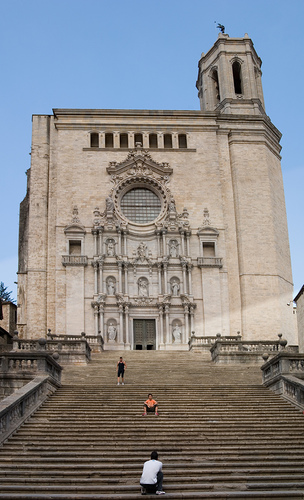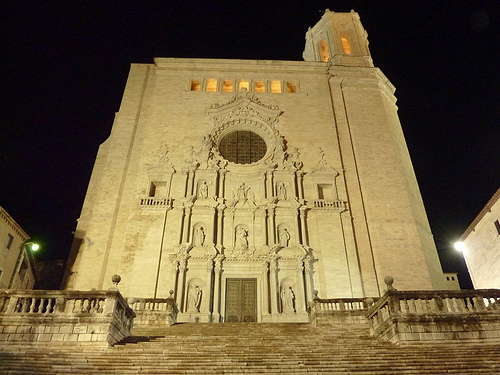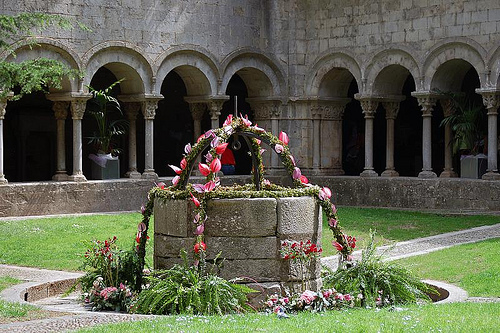Welcome to the Girona Cathedral, certainly one of the most special religious buildings of the Gothic style. This cathedral is considered the widest Gothic nave ever built, with almost 23 meters wide.

Girona Cathedral, Costa Brava, Spain
If we reach by foot the Cathedral Square (Plaça de la Catedral), by the west side, the view of the building is impressive. At this point you see the so called Seu (another catalan name for cathedral), which was built in the XIth, as you can see, in a vertical and solid way. The wide staircase, from the XVIIth century, consists of ninety stairs and 3 flat areas, with 6 terraces side, and is adorned with baroque decorative spheres. One of the biggest steps of this kind ever built.

The magnificient Girona Cathedral stairways, from the Cathedral Square
The baroque facade of the cathedral also has the symmetrical structure of an altarpiece, with its typical columns and pediments. What can we distinguish in this altar? On the sides of the door you can see Saint Peter, easily recognizable by the keys, and St. Paul with the sword. At the top level we have, in the center, the Virgin Mary. And both sides of her you can see San Jose, with the flowering staff, and St. James, dressed as a pilgrim. And finally, at the top of the facade, there is St. John the Evangelist, with the eagle as an emblem, and San Narciso, patron of the city and diocese.

Impressive facade from the Girona Cathedral
The bell tower of the Girona Cathedral was designed by Joan Balcells in 1580, although its construction did not begin until 1751. The tower, 67 meters high, projecting from the cornice that crowns the facade and dome, holds an angel in bronze. It contains 6 bells, including that known as the Beneta (also known as the “Bombo”, bass drum, of 1574), which strikes the hours.
The cathedral contains works of great artistic value. The high altar is silvered, with enamel and precious stones, a true jewel of the goldsmith. The capitals of the cloister depict scenes from the Old and New Testament. The interior retains a Beatus Liebano manuscript and a Tapestry of the Creation, another important piece of the Romanesque art.

Girona Cathedral cloister
The church also contains the Museo Capitular, a museum that contains the Cathedral Treasury, which has, among other pieces, the Arab trunk from Hixem II, from the Xth century and the Cruz de los Esmaltes cross, from the XIVth.







